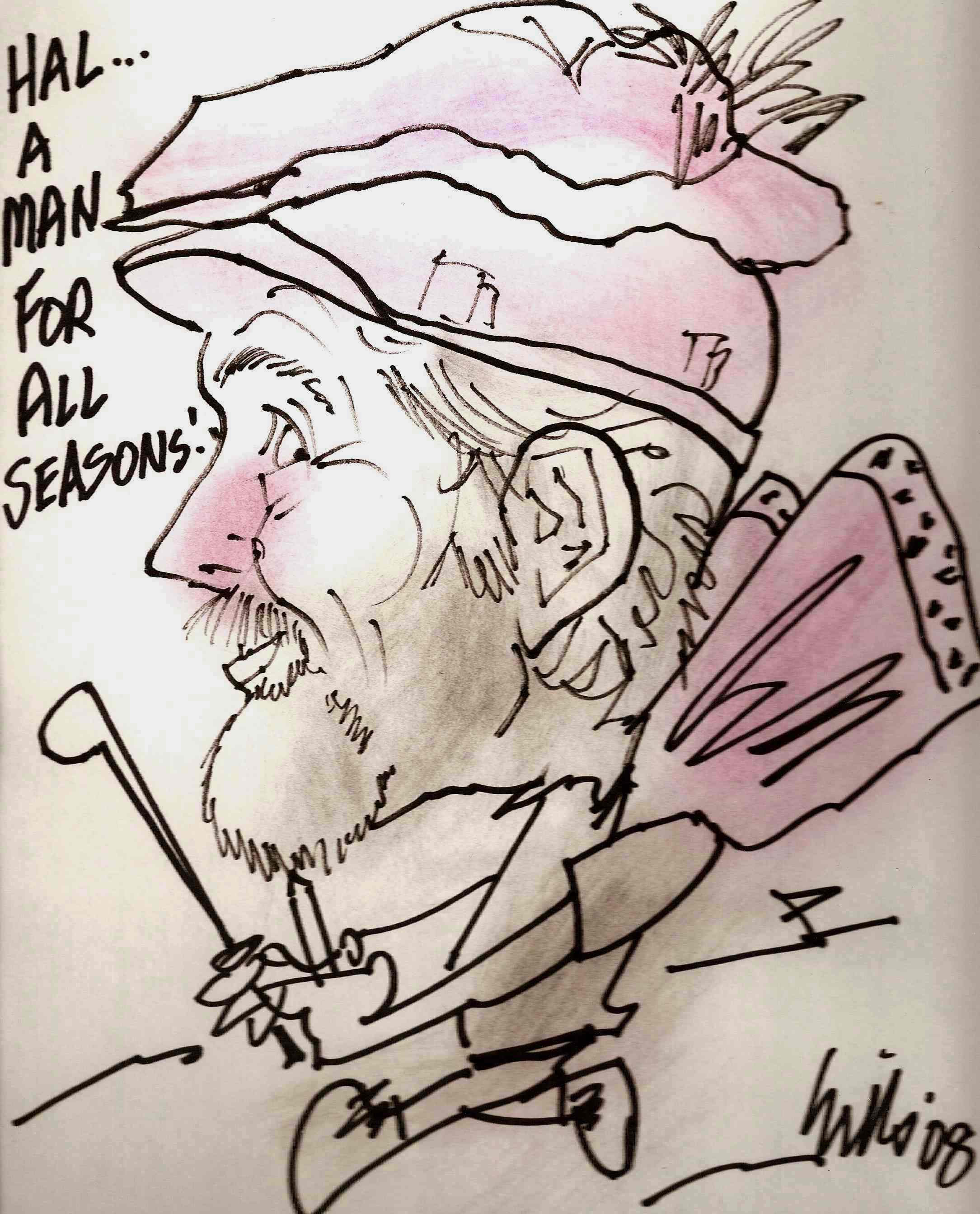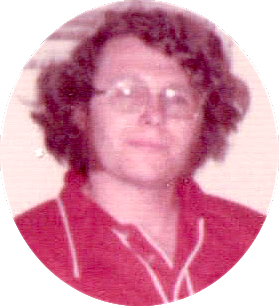Whatever
Happened to Hal Hart
|
Then |
Capsule Summary |
Now |
|
|
Born
in: Salt
Lake City, UT (1945) Grew
Up in: Valparaiso (Valpo),
Indiana High
School: Valparaiso High School,
1963 Undergraduate
Degree: BA
Math, Carleton
College, 1967 Wasted
Grad School Year:
Brown Applied Math, 1967-68; fell in love
with CS & had to transfer… Entered
Purdue: Fall,
1968 Purdue
Degrees: -
MS
CS May 1969 -
ABD,
1975 (went in absentia ,
1974) Lived/Worked
in: Dayton,
OH; Redondo Beach, CA Married
to: Ruth Hart (MS CS ’69), 1969-present Children: Erika (1978), Alison (1981) |
|
Hal
knew “liberal arts math” wasn't exactly for him
when he graduated from Carleton in 1967, so he
narrowed grad school down to Applied Math at
Brown or Purdue CS. Because CS seemed so
much more narrow than ApplMath, he chose Brown. Plus,
Brown gave him a full fellowship and Purdue only
a TA. But the
only ApplMath course he enjoyed was Computer
Science, a two-semester course open to
undergrads and grad students taught by a freshly
minted PhD (Andy van
Dam).
That was Brown’s only CS offering, so
with Andy’s regrets (because
he was trying to get a CS degree approved but
didn’t think he’d make it), Hal
transferred to Purdue in 1968. Andy
surprised himself and got his CS Dept. approved (and went
on to make history in computer graphics and
win awards for teaching) — but it was too
late for Hal.
He had committed to Purdue. Foollish
integrity? Hal
had not thought much about teaching but fell in
love with teaching CS 220 (99
students 2nd semester) and
decided to get a PhD so he could go into
academia.
But,
his was the first class without Draft
exemptions, and his fight with his Draft Board
was more acrimonious than most, and they put an
Induction Notice in his hands before he could
finish his MS and begin as a full-time CS
instructor (then, draft-deferrable). That MS was
earned in 2 semesters (with 6 credit hours
counting from Brown), simultaneous with the
heavy teaching load, fighting the Draft,
courting fellow CS grad student Ruthie Jo Mazur,
and enjoying all CS recreational
activities.
He was so frazzled for induction, he was
permanently DQ’d for high blood pressure. Marriage
to Ruth followed in August 1969, and both began
as Instructors in CS while Hal persued PhD
coursework and exams part-time, passing
Qualifiers & his Prelim, working in AI under
Charlie Pfefferkorn and after he left, machine
learning systems under Terry Frederick until he
to left.
After 2 years teaching full-time (a
highlight was replacing the CS380 programming
assignments with a realistic 3-program
transaction/reporting/billing system based on
a job programming COBOL for the Hecht Co. in
DC in summer of ’68) and 2 more half-time
and a 5th on free money (Thx, Dr.
Conte!), Hal left in 1974 expecting to
finish and defend his dissertation in absentia. By
then Hal had observed the Publish-or-Perish
condundrum up close and wasn’t sure academia was
for him after all. (A small
non-research school might have been perfect
but few offered CS then.) So,
Hal interviewed industry also and both Harts
went to TRW — maybe mainly beause TRW was in
Sunny Southern California and they both decided
they’d had enough of winter. The
PhD was never finished... The
Harts joined the aerospace part of TRW (from
whence Sam Conte had come to Purdue 12 years
earlier) in 1974, assigned first to a
field group in Dayton where they developed an
early development
environment prototype for the new
standardized version of the Air Force
programming language JOVIAL. In
1976 TRW honored a hire-in promise to bring them
home
to California.
They have lived in the same hillside,
ocean-viewing house in Redondo Beach since
moving in almost exactly on the Bicentennial,
the first and only house they expect to ever
live in. Hal
became recognized as a programming
language expert at TRW, but that wasn’t
saying much because High-Level (-Order)
Languages were just starting to be used in
practice in most defense systems and Purdue had
provided him lots of HOL knowledge. He
continued on the Technologist
side of the business (i.e.,
non-fast-track, non-big-project) most of
his career, moving from languages to
environments to process technologies and lots of
training.
Almost half his career he “managed” small
technology contracts which effectively meant he
was the principal investigator for small
support-contractor teams supporting government
technology or standards activities. His passion
became the new Ada programming langauge, and
later the integrated environment initiatives the
Ada initiative triggered. Because
Barry Boehm thought Hal represented TRW well
in public, he was given a long leash to
participate in industry/ government/
international language
(JOVIAL/Ada) & environment standards
activities, as well as broad software
engineering professional society events. He
wrote articles, presented papers and invited
talks, organized panels, or gave tutorials
approximately 100 times at conferences,
workshops, standards committees, etc. in the
U.S. and Europe.
But he maybe even more enjoyed the
discipline of event organizing and was often
drafted into organizing roles, from
conference/workshop chair to treasurer to local
arrangements.
This included roles for several ACM
SIGSOFT and a few SIGPLAN conferences, plus a
20-year stint on the SIGAda (formerly SIGPLAN
AdaTEC) executive committee – two terms as
SIGAda Chair.
Hal
can not find all the
company/government/professional-society
citations and awards he received for technology
achievements (where are
those storage boxes now?), but he’s sure
they numbered exactly the average
number of awards earned by Purdue CS grad
students of his era. Hal
& Ruth retired in 2005, having common
interests in travelling the country and the
world (sixth
continent being checked off this year),
peer-led/peer-organized learning in retirement (Omnilore)
where both got sucked into too many key posts
and thus spend too much non-class-related time,
and as of 2011, Geocaching which fits in well
with both travel and hiking — Rich Ragan
mentored us on our first day to a still-record
13 caches.
Separately, Hal golfs once or twice a
week (walking
most courses) and has been crew-leading,
instructing, and safety organizing for our large
Habitat
for Humanity of Greater Los Angeles
affiliate since 2000 – both surprising for a
senior citize
Purdue Highlights (&
Lowlights)
Career and Other
Post-Purdue Highlights
 n given he
has worn out his left knee twice (probably
from jogging & basketball most of adult
life and hanging on to his beloved softball
team Grunion’77 until getting hits for the
same team in 5 decades, plus poor joint
genes?).
That knee was replaced in 2002 and 2010.
Ain’t
modern medical technology amazing? He is
proud of serving as Safety Chief when we hosted
the 2007 Jimmy Carter Work Project — blitz
building 30 homes in a week with 2000 people
from around the world; his photo with Jimmy is
still his Facebook profile pic. Bring on
those roofs and ladders! Hal
also does amateur websites (incl. Hart-site.net)
for almost every organization he’s involved
with. St.
Hart’s Day (always the Sat. closest to Feb. 14)
is our only social hosting—reserve Feb. 17,
2018, to attend the 50th St.H
Day! (Or should we make 50
years after #1 the big one?)
n given he
has worn out his left knee twice (probably
from jogging & basketball most of adult
life and hanging on to his beloved softball
team Grunion’77 until getting hits for the
same team in 5 decades, plus poor joint
genes?).
That knee was replaced in 2002 and 2010.
Ain’t
modern medical technology amazing? He is
proud of serving as Safety Chief when we hosted
the 2007 Jimmy Carter Work Project — blitz
building 30 homes in a week with 2000 people
from around the world; his photo with Jimmy is
still his Facebook profile pic. Bring on
those roofs and ladders! Hal
also does amateur websites (incl. Hart-site.net)
for almost every organization he’s involved
with. St.
Hart’s Day (always the Sat. closest to Feb. 14)
is our only social hosting—reserve Feb. 17,
2018, to attend the 50th St.H
Day! (Or should we make 50
years after #1 the big one?)

